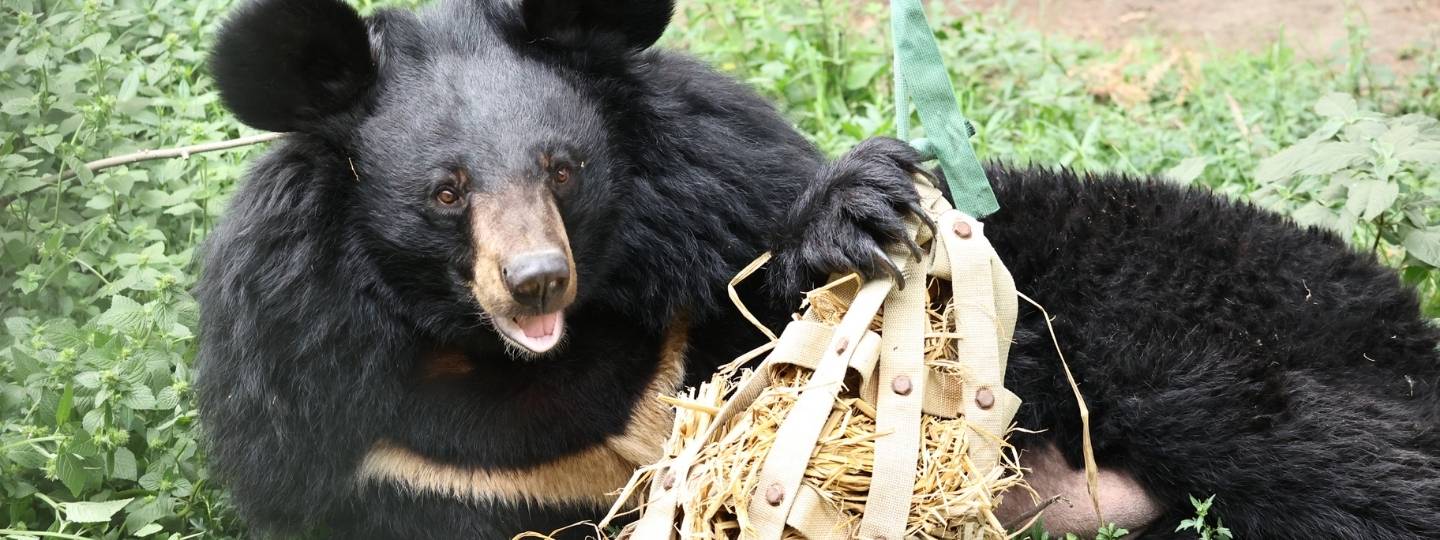
About Asia’s bears
Bears are intelligent, emotional and essential to the balance of the ecosystems they call home. Across Asia, they play a vital role in keeping forests healthy – yet many face threats from habitat loss, poaching and the bear bile industry.
Animals Asia provides lifelong care for rescued bears in our sanctuaries in China and Vietnam, while working to protect their wild counterparts and the forests they depend on.
Most of these are moon bears (Asiatic black bears), but we also care for a small number of sun bears and brown bears, each with their own unique traits and personalities. They’re among Asia’s most misunderstood – and vulnerable – animals.
The world’s bears
Bears belong to a single family – Ursidae – but their lives and habitats stretch across the world, from icy Arctic coasts to tropical rainforests.
There are eight species: Asiatic black bears (moon bears), brown bears, giant pandas, North American black bears, polar bears, sloth bears, spectacled (Andean) bears, and sun bears.
Each species has adapted to its environment in remarkable ways – from the polar bear’s powerful sense of smell to the sun bear’s long tongue for reaching honey and insects.
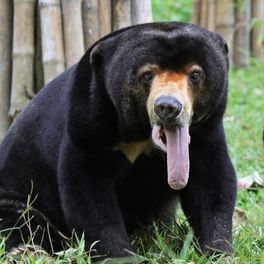 Sun bears have exceptionally long tongues
Sun bears have exceptionally long tongues
Yet across continents, bears face a common story of shrinking habitats, human conflict, and exploitation.
The bears of Asia
Asia is home to three bear species: the Asiatic black bear, the sun bear, and the brown bear. Each plays a crucial role in forest ecosystems – dispersing seeds, enriching soil, and maintaining biodiversity.
-
Moon bears (Asiatic black bears): recognisable by the moon crescent-shaped mark on their chest, moon bears are intelligent and inquisitive forest dwellers. They spend much of their time in trees, building nests to rest and feed and they use their strength and curiosity to explore their environment.
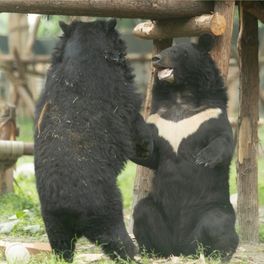
-
Sun bears: the smallest of all bear species, sun bears are agile climbers and keen foragers who love honey, fruit, and insects. Their short, sleek fur and long tongues help them thrive in tropical forests.
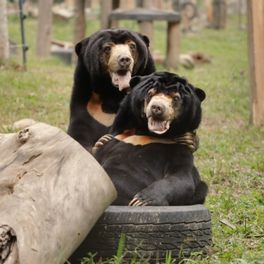
-
Brown bears: found in small pockets across Asia and Europe, brown bears are powerful omnivores with a strong sense of smell and remarkable intelligence.
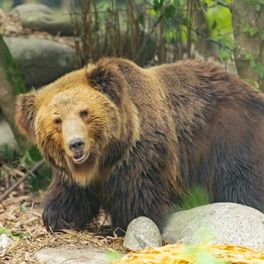
These species – particularly the moon and sun bears – are vital to forest health. As they eat fruit, they scatter seeds across wide territories, helping new plants to grow and keeping forest ecosystems diverse and resilient.
Extraordinary minds
Bears are not only strong but remarkably intelligent. They use problem-solving, memory, and various tools to navigate their environments.
They’ve been seen moving logs or rocks to reach food, stacking objects to climb, and using textured stones to scratch moulting fur.
Bears also create resting ‘beds’ high in trees by bending branches together. Some sleep in them; others use them as feeding or lookout spots.
In behavioural studies, bears distinguish numbers, recognise familiar faces or objects in photographs, and remember locations of food sources years later.
These signs of intelligence remind us that bears don’t just survive in the wild – they thrive in ways we’re only beginning to understand.
Survivors of cruelty
Most of the bears in our sanctuaries were rescued from the bear bile industry – a practice that kept them confined in tiny cages and caused years of physical and psychological trauma.
When they arrive, many are underweight, with missing teeth, infected wounds, and damaged gallbladders.
But bears are remarkably resilient. With space, care, and kindness, they begin to heal. They rediscover how to climb, play, and trust. Seeing a rescued bear splash in a pool or rest peacefully under the trees is a powerful reminder of their strength and spirit.
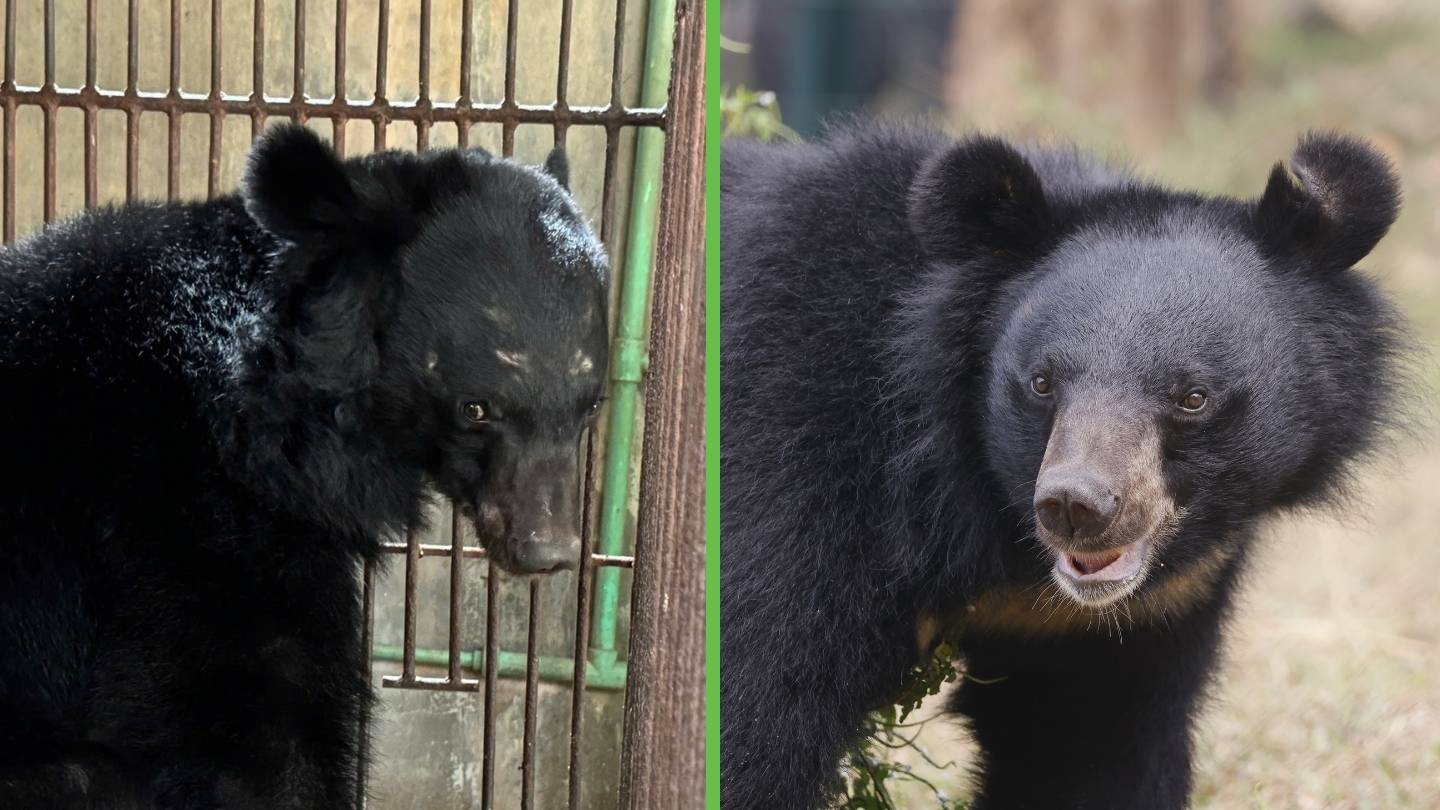
Threats and protection
Moon and sun bears are listed as Vulnerable by the IUCN. Their biggest threats are habitat loss, illegal trade, and bile farming.
Animals Asia is working to end bear bile farming in Vietnam, restore habitats, and change hearts through compassion and education.
Hope for the future
By protecting Asia’s bears, we protect the forests they sustain and the biodiversity that depends on them. Every rescued bear, every tree that regrows, and everyone who supports Animals Asia is part of that future.
